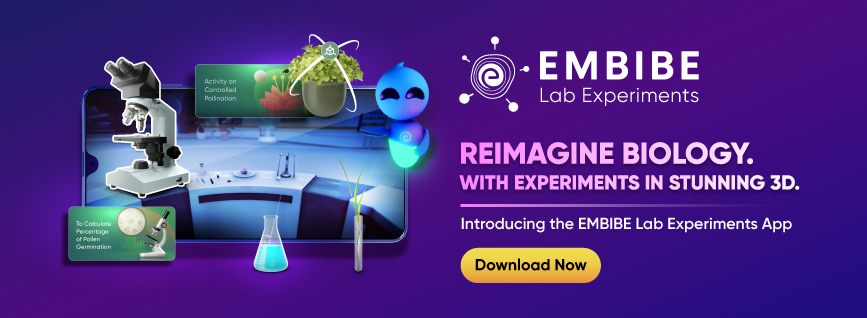| Measurement and Experimentation | Physical Units
Experimentation
Measurement of Length
Measurement of Mass
Measurement of Time |
| Motion in One Dimension | Position, Distance and Displacement
Equations of Motion
Speed, Velocity and Acceleration
Graphical Representation of Motion |
| Newton’s Laws of Motion | Newton’s Laws of Motion
Force |
| Gravitation | Universal Law of Gravitation
Acceleration Due to Gravity
Fall |
| Fluids | Pascal’s Law
Density and Relative Density
Pressure Exerted by Liquid Column
Atmospheric Pressure
Buoyancy and Archimedes’ Principle |
| Heat | Heat and Temperature
Heat Transfer
Thermal Equilibrium
Thermal Expansion |
| Energy Flow and Sources of Energy | Food Chain and Food Web
Energy Flow and Laws of Thermodynamics
Source of Energy
Environmental Consequences |
| Light | Reflection of Light
Plane Mirror
Spherical Mirror |
| Sound | Production and Propagation of Sound
Terms Related to Sound Wave
Speed of Sound
Range of Hearing |
| Current Electricity | Electric Charge
Electric Current
Sources of Direct Current
Electric Circuit
Electric Potential |
| Magnetism | Magnets
Magnetic Field
Molecular Theory of Magnetism
The Earth’s Magnetism |
| Know about COVID-19 | COVID-19 Vaccinations Drive
Corona Variants
Coronavirus: Structure
COVID Complications and Prevention |
| Introducing Biology | Various Branches of Biology
Growth of Biology
Importance of Biology |
| Cell: The Unit of Life | Types of Cell,
Structural Organisation of a Cell
Introduction to Cell
Variation in the Size
Shape and Number of Cells
Invention of Microscope and Its Different Types |
| Vegetative Propagation and Micropropagation | Natural and Artificial Methods of Vegetative Propagation
Introduction to Vegetative Propagation
Economic Importance of Artificial Propagation
Hybridisation
Micropropagation or Tissue Culture |
| Biotechnology | Introduction to Biotechnology
Biotechnology: In Earlier Times and in Modern Times
Techniques of Biotechnology and Genetic Engineering
Applications of Biotechnology in Medicine and in Industry
Transgenic Organisms |
| Ecosystem | Components of an Ecosystem
Food Chain, Food Web and Food Pyramids
Pond Ecosystem
Forest Ecosystem: Types and Flora and Fauna |
| Five Kingdom Classification | Kingdom Plantae
Nomenclature
Diversity in Living Organisms
Classification and Its Importance
Five Kingdom Classification |
| Economic Importance of Bacteria and Fungi | Bacteria: Discovery, Forms, Structure and Life Processes
Fungi: A General Study
Harmful Roles of Bacteria: Food Spoilage, Diseases and Bioweapon
Useful Role of Bacteria in Agriculture
Useful Role of Bacteria in Medicine |
| Digestive System | Mechanism of Digestion and Certain Experiments
Mouth and Teeth
Pharynx, Oesophagus and Stomach
Small Intestine, Large Intestine and Anus
Digestive Glands |
| Tissues: Plant and Animal Tissues | Introduction to Tissues
Plant Tissues
Animal Tissues |
| Respiratory System | Respiration and Its Types
Energy Requirement of Different Organisms
Human Respiratory System
Mechanism of Respiration
Respiratory Volumes and Capacities |
| Respiration in Plants | Respiration in Plants and Related ExperimentsIntroduction to RespirationTypes of RespirationRespiration and PhotosynthesisRespiration in Plants Vs Respiration in Animals |
| Pollination and Fertilisation | Introduction to Pollination and Its Types
Fertilisation in Flowering Plants
Agents of Pollination and Some Examples of Pollination
Structure of a Pollen Grain and an Ovule
Fruits and Seeds |
| The Skin | Skin and Its Functions
Structure of the Skin
Skin Derivatives
Skin and Heat Regulation |
| Waste Generation and Management | Waste and their Sources
Methods of Safe Disposal of Wastes and Waste Management |
| Aids to Health and Health Organisations | Immunity and Immune System
Vaccination and Immunisation
Use and Action of Medicines
Disinfectants and Antiseptics
Health Organisations |
| The Flower | Structure of a Bisexual Flower
Types of Flower: On the basis of Presence of Whorls, Forms of Thalamus
Inflorescence and Placentation |
| Movement and Locomotion | Muscles and Its Movement
Human Skeleton
Bones and Joints |
| Nutrition | Basic Food Groups and Classes of Nutrients
Nutritional Disorders |
| Seeds – Structure and Germination | Seed and Its Type
Structure of a Dicotyledonous Bean Seed
Structure of a Monocotyledonous Maize Seed
Germination and Its Types |
| Living, Non-living and the Dead | Properties of Life
Non-living Things that can Behave Like Living Things |
| The Language of Chemistry | Balanced Chemical Equation
Gram Molecular Mass
Symbols
Molecular Formula
Writing Formula of Compounds |
| Chemical Changes and Reactions | Physical and Chemical Change
Chemical Reactions and its Types
Change of Energy during Chemical Reaction
Combustion and Respiration
Balancing of Oxygen and Carbon Dioxide in Nature |
| Water | Introduction to Water
Physical Properties of Water
Chemical Properties of Water
Solutions
Solubility |
| Atomic Structure and Chemical Bonding | Discovery of The Structure of an AtomIntroduction to Atomic StructureDifferent Atomic SpeciesIntroduction to Chemical BondingElectrovalent Bond |
| The Periodic Table | Need for Classification of Elements
The Modern Periodic Table
Early Attempts at Classification of Elements
Mendeleev’s Periodic Table |
| Study of the First Element – Hydrogen | Position of Hydrogen in the Periodic Table
Properties of Hydrogen
Preparation of Hydrogen
Tests and Uses of Hydrogen
Oxidation and Reduction |
| Study of Gas Laws | Gaseous State
Gas Laws
Absolute Zero and Absolute Scale of Temperature
Ideal Gas |
| Atmospheric Pollution | Atmosphere and Pollution
Acid Rain
Global Warming
Ozone Depletion
Oxygen and Carbon Dioxide Cycle |
| Practical Chemistry | Identification of Gases
Experiment Based on Hard and Soft Water
Action of Heat on Given Substances
Action of Dilute Sulphuric Acid to Given Substance
Flame Test |








































